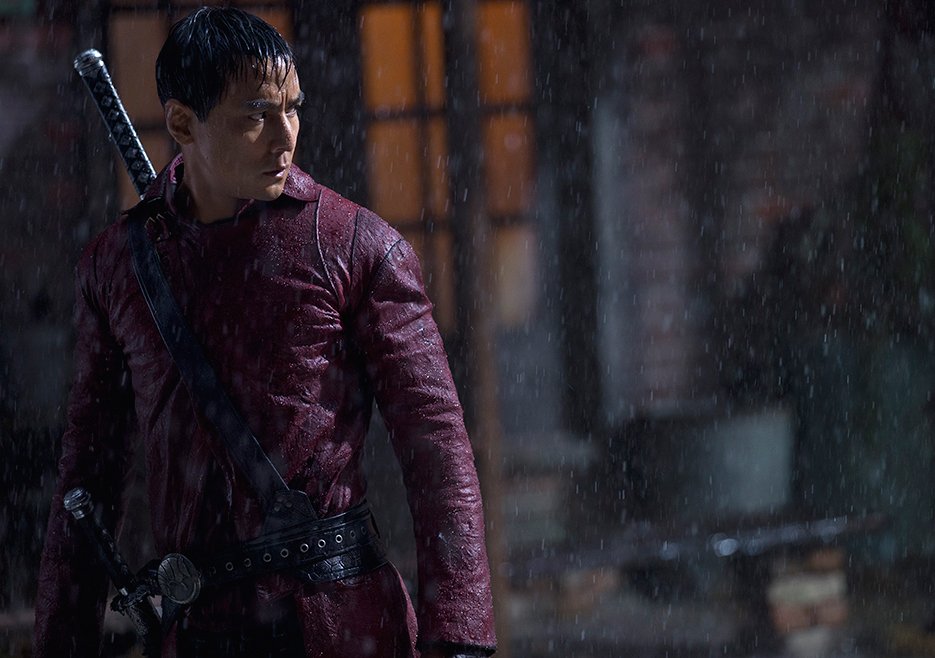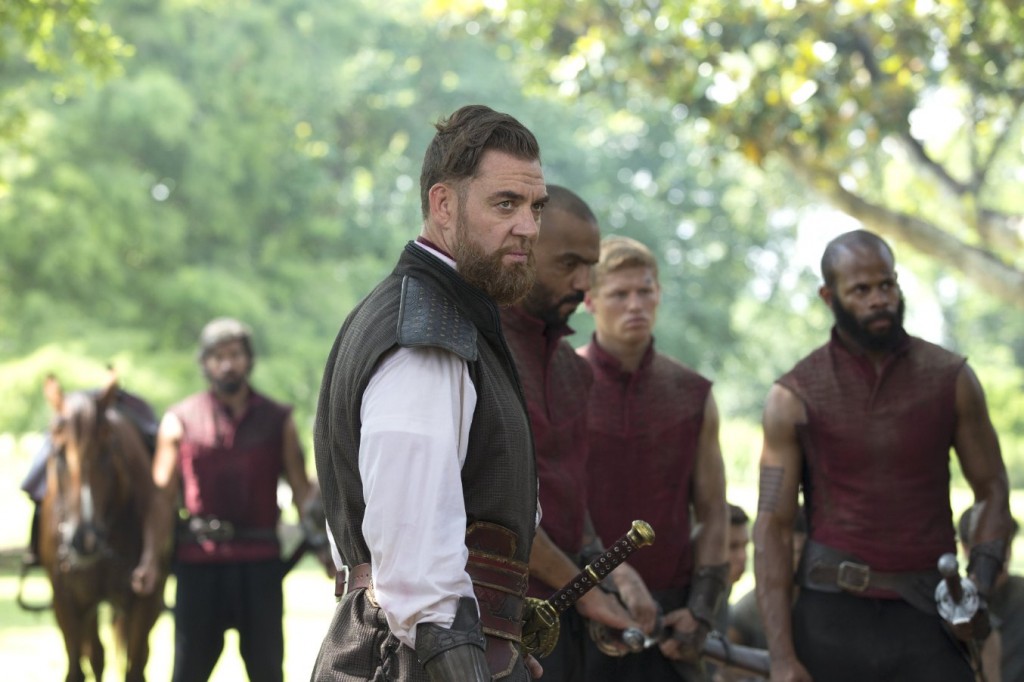AMC, as a network, is in an odd position. One the one hand, they’re renowned for their high-quality dramas, like Mad Men and Breaking Bad, which helped to define the “prestige era” of TV drama. On the other, their big moneymakers are schlocky, action-based series like The Walking Dead and Fear the Walking Dead. A lot of programming tries to emulate the first of these two groups, like Halt and Catch Fire or Better Call Saul. But AMC’s latest scripted series, Into the Badlands, eschews that setup in favor of violence, dystopia, and kung fu, and it rules.
Into the Badlands is set in an alternate timeline that’s somewhere between Bunraku and Mad Max. After a huge, destructive war, guns have been outlawed, and the world is controlled by powerful land barons who enforce their will through Clippers, small armies trained in unarmed and sword-based martial arts. It’s an eclectic setting, one that’s influenced by everything from antebellum Southern plantations to 1930s shanty towns in Shanghai. In the center of everything is Sunny (Daniel Wu), the top enforcer for opium baron Quinn (Martin Csokas). Sunny is the most feared Clipper in the Badlands, but he has lost his taste for killing and is looking for a way out for both him and his pregnant lover, Veil (Madeleine Mantock). He finds it in M.K. (Aramis Knight), a young boy searching for his mother who claims to know how to reach Azra, a rumored city outside the Badlands.
It’s a decent enough premise, although the writing and performances can be thin sometimes. I’m not making the case that Into the Badlands is a show like Fargo or You’re The Worst, where every element from scripting to performances to editing and composition choices works harmoniously together. What I will argue is that ITB does a couple of things exceptionally well, and these peaks make any other mediocrity well worth sitting through.
The first and biggest draw, unquestionably, is the fight sequences. Wu shines in them, and they’re the core conceit the world is built around. The choreography is dazzling, the cinematography is top-notch and suited for the fights, and everyone in it, from leads to minor henchmen, is either up to the task or good enough at faking it that clever cuts and camera angles can do the rest. It’s violent, sure, but it’s also stylish. Compare the swordplay here to FX’s The Bastard Executioner or even Game of Thrones and there’s really no competition. There’s a sword fight between Sunny and an opposing baron’s goons in the first episode that’s a level of kinetic and intense usually reserved for film, and most episodes thus far highlight the artistry and finesse of the world’s combat.
The second draw, for me, is the aesthetic details of the Badlands universe. A friend of mine mentioned that the show features worldbuilding with visual style and aesthetic in mind over sensibility, and we both agreed this isn’t a bad thing at all. There’s a lot of stuff that’s unclear, certainly, like what year it is or even what country in which it takes place, but the patchwork culture allows for a lot of interesting juxtapositions.
I’ve seen the series described as “Kill Bill meets Mad Max,” and while I think it does have a lot of the same reference points as Tarantino, they’re used differently here. Rather than being ironic or critiques and deconstructions of genres, Into the Badlands is like a really well-developed tabletop RPG game: we all agree to buy into the sometimes-absurd setting so we can reap the benefits of it. The barons have the feel of 1800s plantation owners or captains of industry, but the feudal society allows for more draconian laws and other medieval twists, like Quinn’s practice of polygamy. There’s a lawlessness outside the walls of the barons’ mansions and forts that’s a clear Western homage, with saloons and small-town doctors, but we also get images of Sunny riding a motorcycle across the plains. It’s a playful anachronism, and the primary rule, that guns have essentially been uninvented, is relatively easy to buy into, more so than the constant fiddling with NBC’s superficially similar Revolution. We can remember times in history before guns, and we can believe that they were no less dangerous or exciting.
This goes somewhat hand in hand with the clashy mix of styles in the worldbuilding, but the last draw to Into the Badlands is the mix and remix of various character tropes in the series’ cast. There’s one truly great performance so far, which is Csokas as the mercurial, violent opium baron Quinn. Csokas plays him somewhere between Big Daddy Pollitt and Truman Capote, with a bit Kyuzo from Seven Samurai thrown in. He languidly complains to Sunny about his troubles controlling his family, who seems to both respect and quietly dislike him. A riff on a rich, lonely good old boy isn’t something you’d expect in a martial arts-themed show, but his scenes are easily the non-combat highlight of the show, and the more scenery he chews, the better.
Daniel Wu is a little wooden as Sunny in the first episode, but he loosens up as the show goes on, bringing the occasional humor and vulnerability to a character written primarily to look and act like a badass. Beyond that, there’s a variety of characters who are riffs on other stuff, but in a way that’s fun to watch and has the potential for good stories later down the road. Quinn’s wife (Orla Brady) and new bride-to-be (Sarah Bolger) have a relationship that’s an even more distilled version of Cersei Lannister and Margaery Tyrell on GoT. Quinn’s primary rival, a baroness called The Widow (Emily Beecham), is a sultry redhead who wears black catsuits and is good with a sword. Stephen Lang, of Avatar and Terra Nova, shows up as a grizzled, Clipper veteran who uses a wheelchair and can still kick average villagers’ asses. It’s a lot of clichés, but played with the right level of awareness so you can still feel immersed in the world.
Into the Badlands is probably not going to win a bunch of Emmys next year. It’s not the kind of show that’s going to be buzzed about on major TV critic podcasts. But it’s really good at what it sets out to do, which is tell a visually striking kung fu dystopia story one hour a week. If it can keep that up, then we’re set; it’s all I want in the world.
Into the Badlands airs on AMC at 10 PM Sundays.




The angle in the grave yard in 3 episode of into the badlands was the same angle from the mast of a ship on seasone finale of terra nova what is the connection ?